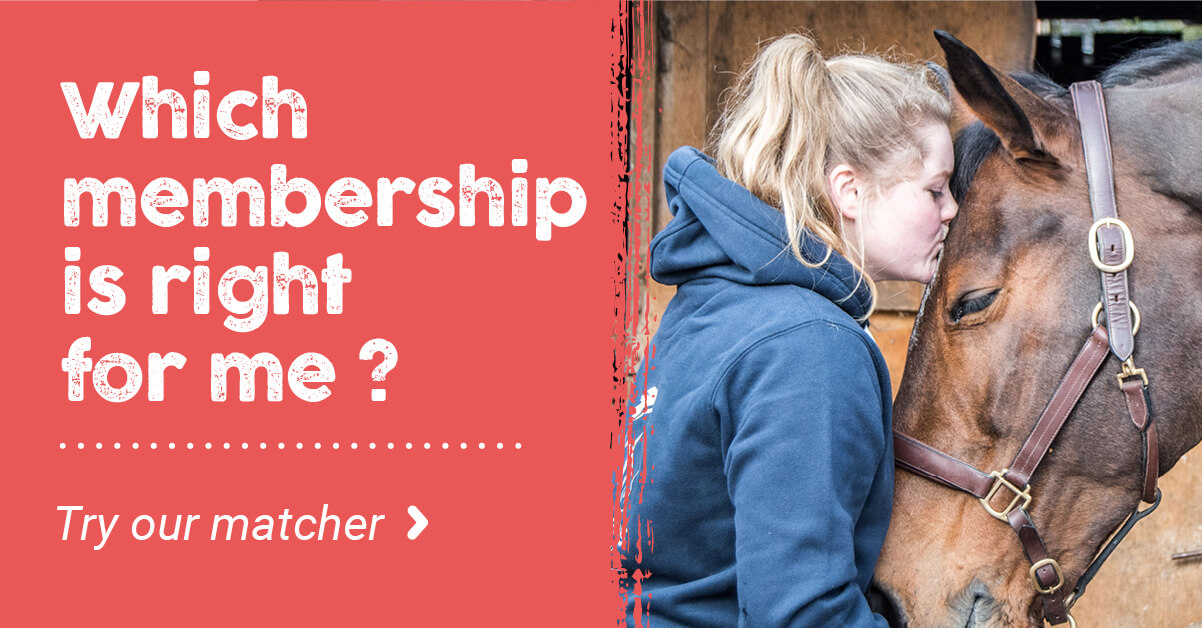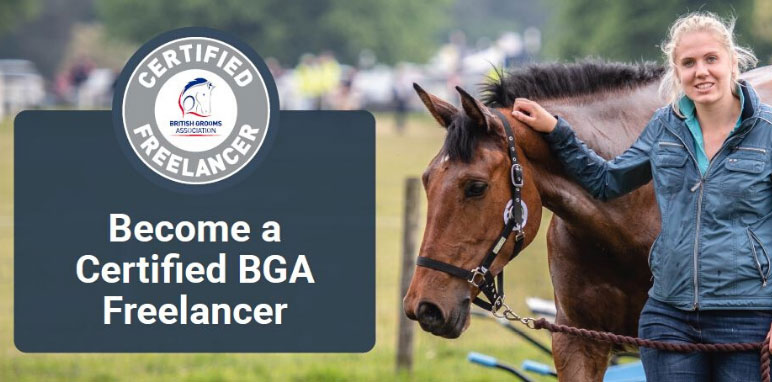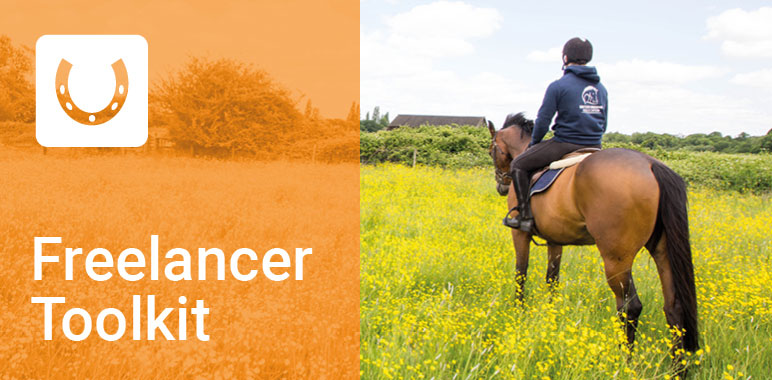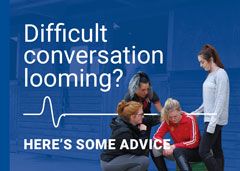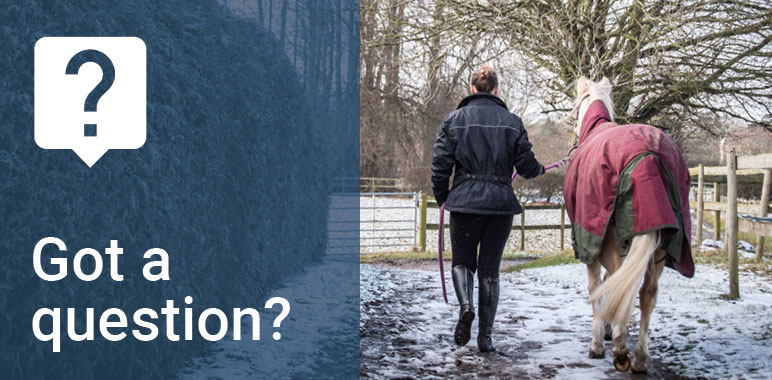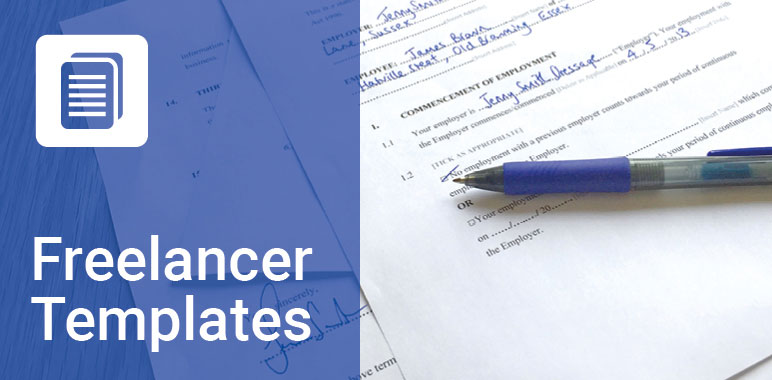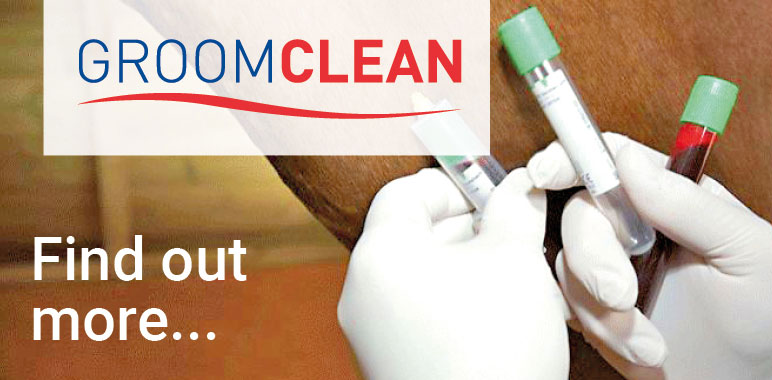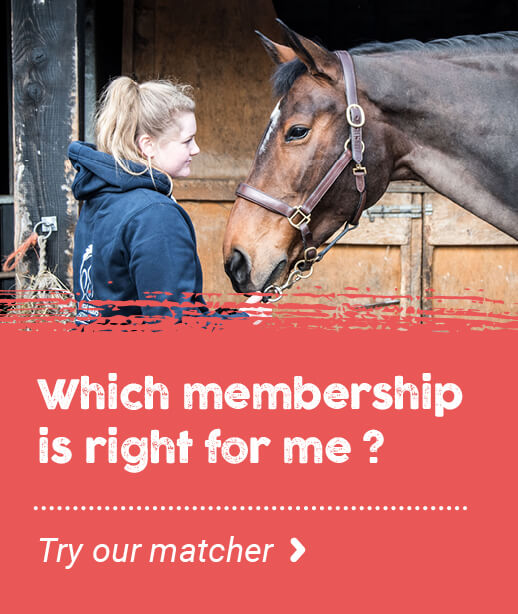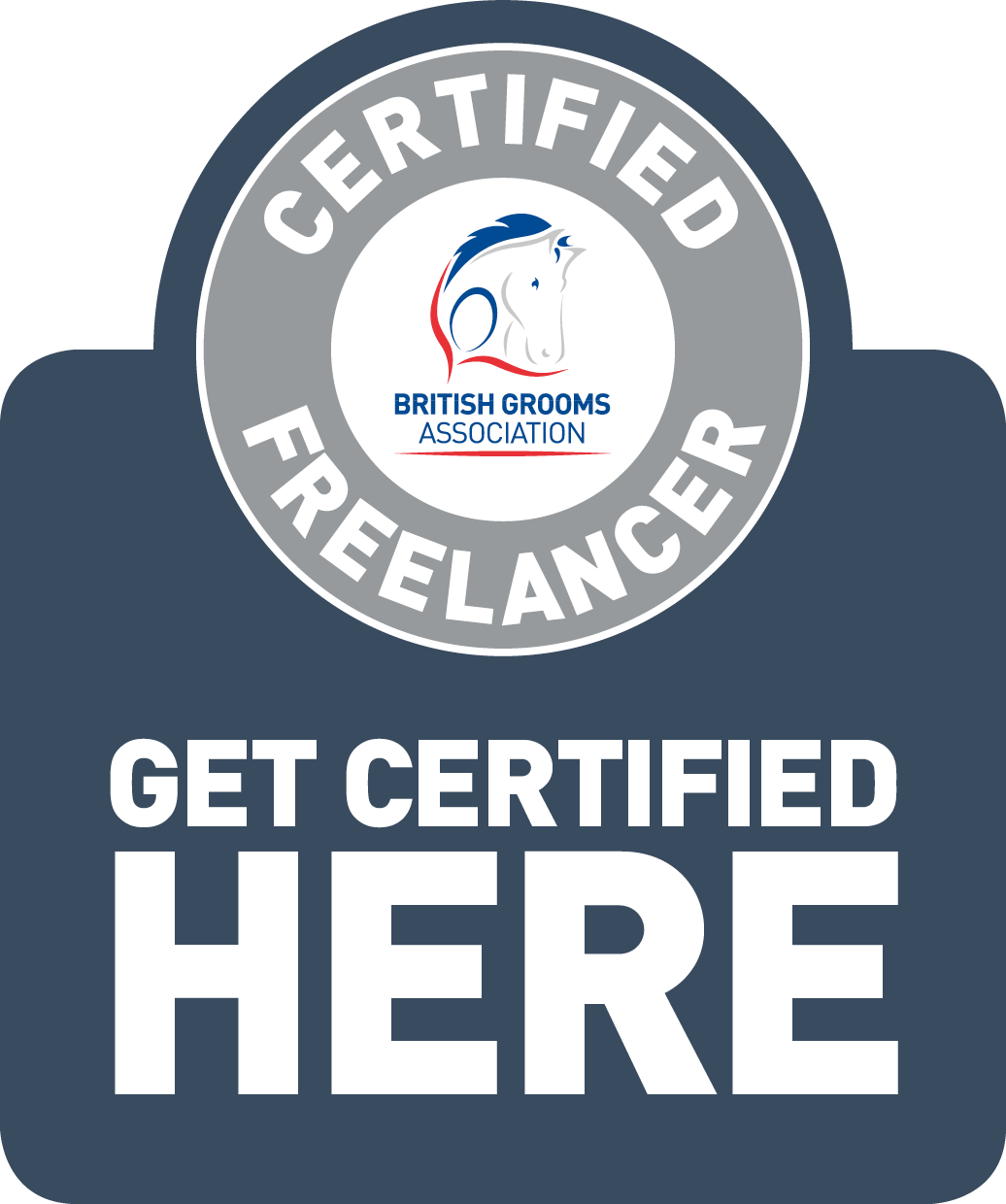- Join Now
- Login
- Member Zone
- Your Career
- Freelancing
- International Grooms Association
- BGA Training
- Healthy Yard Healthy Horses
- Transporting horses
- Brexit
- Safe workplace
- Student Zone
- Member Discounts
- BG Magazine
- Member services
- My employment
- Am I employed correctly
- Grooms Minds
- Safeguarding
- Legal Helpline
- BGA guide to the National Minimum Wage
- Training & Careers
- BGA CV Creator
- Horse groom training
- Where to Train
- BGA E Learning
- Career choices
- Change to Racing
- First Aid training for grooms
- Parents
- Grooms Jobs
- Grooms Life
- About
- News
- Contact

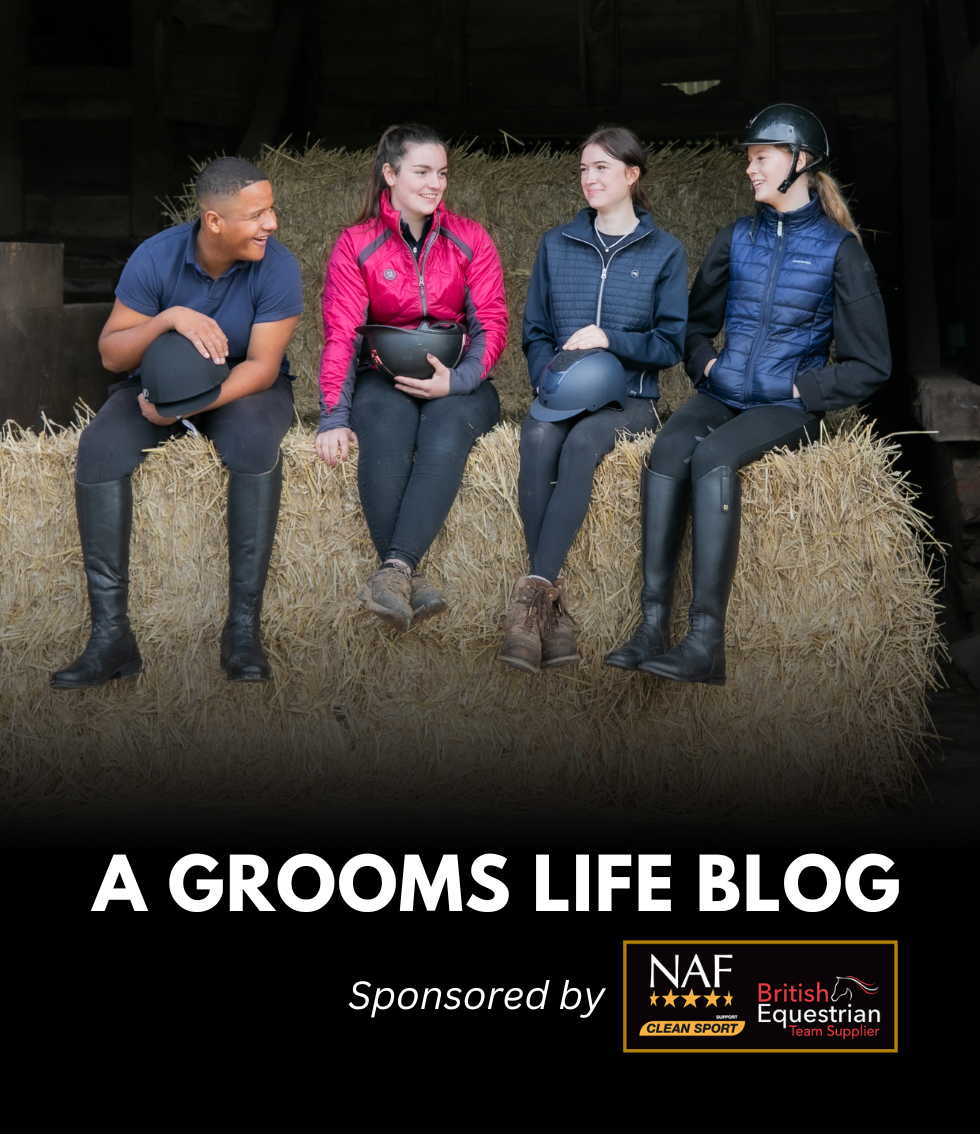
Over the last few months of lockdown many horses will have been kept in minimal work, or rested completely. With restrictions starting to lift our attention is now turning to getting these horses fit / fitter as they look to return to their normal work load. As with any period of time off it is important that work is introduced, or increased slowly. This is a critical phase, as fitness and strength needs to be regained without causing injury, and your usual regime to get horses back to full fitness should be followed closely. During this fitness phase you may want to restrict calorie intake to prevent weight gain and over exuberance. It is vitally important though that the horse is still receiving a balanced diet with plenty of forage and a digestible source of protein. Once horses have returned to work, and their level of exercise starts to increase, there is an even greater demand for protein to support the increased rate of muscle protein turnover (breakdown and repair) that occurs with exercise. International groom Kate Harley has this advice: Horse’s legs are fragile and it’s our job to do everything we can to help prevent injury, wear and tear on the limbs. I always get to know the horses legs, I check them probably more than is healthy, but small and subtle changes are so easily missed or overlooked, so get to know what lumps and bumps (if any) are normal. Some horses’ legs fill overnight, or if stood in for long periods, so if you are unsure then check if this normal for that horse. There are lots of theories regarding which methods work best. There are various options and some great products on the market. Cold hosing is one of the easiest and cheapest options, however this can be quite time consuming as research suggests that you should hose each leg between 5-10 minutes to cool them adequately. Equine spas are brilliant but unfortunately pricey. These are great because they not only cool the legs with a consistent water temperature they also use salt water and have a massage function to help improve circulation and reduce swelling. As well as cold water options there are some great products available, such as ice boots. These are simple and easy to use and a lot less time consuming as you simply put the boots or the ice pack inserts into the freezer and then when needed take the out and put on the legs, they then stay on for roughly 15/20 minutes thus freeing you up to do other jobs. There are also cooling gels and clays. These work by drawing the heat away from the limbs and help to prevent swelling. A lot of the clays can then be bandaged over once dry to add additional support. Working with horses comes with its challenges, and we all know that bringing horses back into work can come with its fair share of ‘hold on tight’ moments. Make sure you have a hard hat that fits correctly, correct footwear and gloves as a minimum. While we think ‘it won’t happen to me’, accidents do happen, even to the most experienced riders, on the most predictable of horses. Don’t get caught short – make sure you have personal accident insurance. Have a look at the No. 1 trusted grooms insurance, provided by the BGA at a discounted rate. Bringing horses back into work
26th May 2020
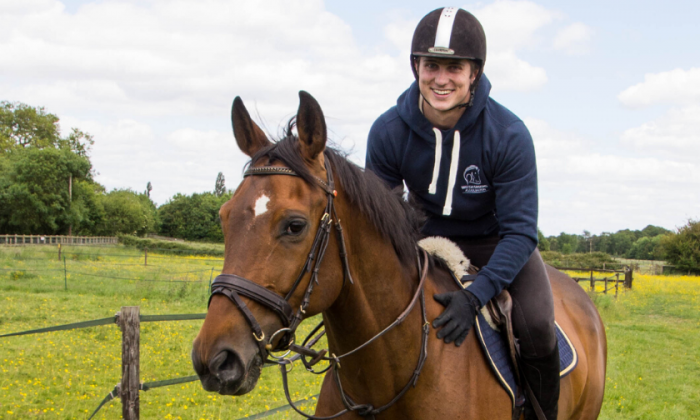
Although it can be tempting to cut corners, especially during the ‘neck strap’ phase, it is also important to remember that currently the ground is exceptionally hard, which can lead to concussive injuries and should be monitored for.
Equitop Myoplast is ideal to supplement your horse’s existing ration providing a high quality and digestible source of protein.
Read their advice on FEEDING HORSES DURING PERIODS OF REST AND RECUPERATION AND RETURNING TO WORK
Care of the legs
As grooms we play a vital role in helping to ensure the horses in our care remain injury free.
So how can we help to try and keep legs healthy and injury free?
Use boots or bandages for exercise to help support the legs. There are pros and cons to both. For example boots are quicker and easier to put on and take off, but maybe don’t give the level of support that bandages do. However badly applied bandages can be detrimental and cause more harm than good.
Cooling legs after exercise
The clays and gels then need to be washed off after a certain period of time, although this differs for each product. Whichever method you chose think about practicality and time constraints, for example if you are at shows some options aren’t always possible.
Warming up properly is vital to help reduce injuries, increase mobility and elasticity in muscles which will help minimise stress and strain on tendons and ligaments.
As well as warming up properly, cooling down is just as important, allowing the horses to stretch after strenuous exercise helps prevent lactic acid build up in muscles, proper walking off will help prevent muscle stiffness and ‘tieing up’.
Doing fitness work properly and slowly after a break is imperative as muscle tone, strength and fitness will be lost even if only after a short time.
Turn out as much as possible to keep the limbs moving and help promote blood flow to the area; obviously you don’t want them charging around though
Never cut corners with bringing horses back into work and remember prevention is better than cure!”
Don’t forget about yourself…
BLOG ARCHIVE
- 2025 (16 ENTRIES)
- 2024 (52 ENTRIES)
- 2023 (60 ENTRIES)
- 2022 (35 ENTRIES)
- 2021 (24 ENTRIES)
- 2020 (19 ENTRIES)
- 2019 (45 ENTRIES)
- 2018 (36 ENTRIES)
- 2017 (7 ENTRIES)
What the personal accident policy covers you for:
- Whilst at work
- All stable duties – mucking out, grooming, washing off, turning out
- Clipping
- Riding – including hacking and jumping
- Hunting
- Lunging
- Breaking in
- Holding horse for a vet and other procedures
- Travelling horses both in the UK and abroad
- Competing in line with your job including: jumping, dressage, eventing
- Injuries that may happen to you whilst you are teaching - but you must also be grooming as part of your duties and not be a sole instructor
What the personal accident policy doesn’t cover you for:
- Riding in a race, point to point or team chase
- Stunt Riding
- Accidents occurring whilst travelling to and from work
- Riding and competing your own horse (but you can upgrade when applying for membership to include this)
- Public Liability – this is a separate insurance policy - the Freelance Groom Liability Insurance
- Care Custody and Control – this is a separate policy - the Freelance Groom Liability Insurance
If you require additional cover then please contact KBIS directly.
| GROOM | RIDER | EMPLOYER | |
|
When you are working for other people you do most of the following; muck out, turn out/catch in, tack up, groom horses, exercise Horses (including hacking, jumping and schooling), in the care of your employer/client. |
|
|
|
| Predominantly ride horses for other people including schooling, exercising and competing. | NO |
YES |
YES |
| Provide grooming services for someone else either full time or on a freelance basis i.e. an employer or a client. | YES |
NO |
NO |
| Employ staff – have an employers liability policy in your name | NO | NO | YES |
| Buy and sell horses | NO | YES | YES |


